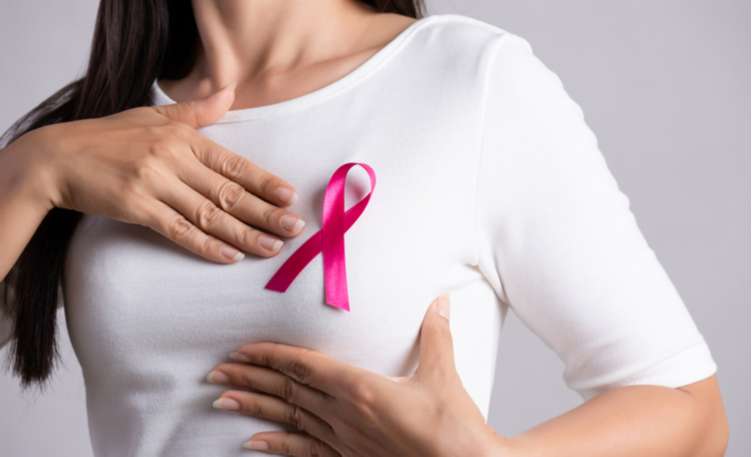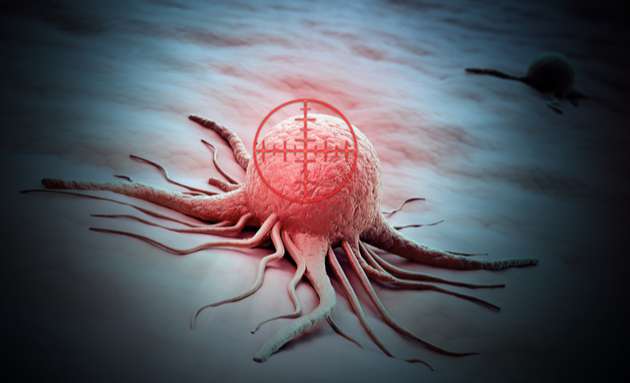5 Stages of Breast Cancer and Its Treatment

Breast cancer like other cancers of the body is identified through ‘stages’ which go on to define the severity of a patient’s condition. Breast cancer has 5 stages which go from 0 to IV. These stages are decided based on the size of a tumour, its spread to the surrounding lymph nodes or to other parts of the body.
According to doctors, the seriousness of the disease increases with every growing stage. Knowing the stages clearly can help in understanding breast cancer and how to treat it.
The Stages of Breast Cancer

Breast Cancer Stage 0
Stage 0 is a non-invasive stage which means that cancer has not spread to blood vessels, tissues or healthy cells nearby. But according to doctors, this stage is difficult to detect due to a lack of visible symptoms. Surgical treatment is recommended for DCIS because it can grow rapidly. For LCIS, only close observation is advised since these cells are rarely cancerous.
It is also called carcinoma in situ and is an early stage of breast cancer. It is of two types
- Ductal carcinoma in situ (DCIS) wherein breast cancer cells evolve in the breast ducts (tubes that carry breast milk from the breast lobules to the nipples).
- Lobular carcinoma in situ (LCIS) is where unusual cells develop in the lobule. A breast lobule is a gland that makes the milk.
-
Breast Cancer Stage I
It is an early but invasive stage of breast cancer which means that the tumour has the tendency or has possibly spread to adjacent healthy tissues. The cancer cells spread around the breast tissues, surpassing the area of origin. Stage I can be diagnosed with an early screening but like stage 0, this is also hard to detect due to the absence of vital symptoms. In stage I, the tumour is about 20 millimetres or less in size.
-
Breast Cancer Stage II
In Stage II, the tumour is somewhere between 2cm to 5cm and the cancer cells have spread to the adjacent lymph nodes in the armpit. Generally, up to 3 lymph nodes are affected in this stage.
-
Breast Cancer Stage III
Doctors call this stage “locally advanced disease” which means though the tumour is growing and bigger than 5cm, it has not spread to distant organs.
-
Breast Cancer Stage IV
The final and the most severe stage means cancer has spread from the breast to one or more parts of the body like the lungs, liver, bones or brain.
Treatment of Breast Cancer

Once a patient has been detected with breast cancer, doctors decide the treatment according to the stage. According to oncologists at Medanta-The Medicity, for stages 0 to III, doctors treat the patient with a curative intention, where the objective is to cure the patient.
Treating Stage 1 to Stage 2 Cancer
Doctors perform breast conservation or breast-sparing surgery for these stages of breast cancer. The aim of this surgery is to save as much of the adjacent healthy breast tissue. This procedure includes lumpectomy (removal of the tumour and some of the normal tissue that surrounds it) and partial mastectomy (partial removal of the breast that has cancer). A patient can opt for breast reconstruction for getting new breasts after the surgical removal of the tumour.
Sometimes, the doctor may advise a procedure known as mastectomy which is the complete removal of one or both breasts. Any affected lymph nodes are also removed.
In these stages, a method called Sentinel Node Biopsy is done, to check whether cancer has reached the armpit. In this method, a scan is done and about two or three lymph nodes are taken out and sent for testing. If cancer has spread to the lymph nodes, they are completely removed from the armpit. If cancer has not spread to the armpit, the rest of the lymph nodes are not removed.
After the tumour has been surgically removed, some types of systemic treatments are offered to patients. These include:
- Chemotherapy: A combination of anti-cancer drugs to slow or stop the growth of cancer
- Hormonal Therapy: Drugs that slow down or stop the growth of hormone-sensitive breast cancer
- Targeted Therapy: Drugs that specifically identify and destroy cancer cells), either alone or in combination, is given to the patients, depending upon the detailed biopsy report, including ER (Oestrogen Receptor), PR (Progesterone Receptor) and HER-2/neu status. These treatments are given to reduce the future risk of reoccurrence.
Post the above treatment, radiation therapy, where powerful energy beams are used to kill the cancer cells, is administered for a few weeks. For breast-sparing surgery, radiation therapy is mandatory to reduce the chances of cancer reoccurrence.

Stage 3 to Stage 4 Cancer
If the cancer is at stage III, a treatment called Neoadjuvant chemotherapy is often given where chemotherapy drugs are given before, and not after surgery, to reduce the size of the tumour. When the tumour shrinks, it helps surgeons to easily operate upon it. With Neoadjuvant chemotherapy, a woman might need to undergo a lumpectomy instead of mastectomy. According to doctors, Neoadjuvant chemotherapy has the potential to make patients cancer-free and can also dismiss the need for any surgery. After reducing the size of the tumour, doctors perform the surgery, followed by radiation therapy.
For stage IV, doctors focus on increasing the long-term survival of the patient rather than primarily curing it. According to doctors, a majority of patients detected with stage IV breast cancer cannot be cured, but with modern treatment, an improvement in the quality of life can be achieved.
In fact, they add, if limited organs are affected, good treatments are available to help the patient to lead a better life. In this stage too, a patient undergoes various treatment modalities, however, since cancer has spread to various organs, surgery has a very limited role in the management of advanced breast cancer and is done in very few cases, for symptomatic relief.
Survival Rates of Late-Stage Breast Cancer

For any person trying to understand the stages of cancer, the demarcation is clear. Stages 0 to III are termed as ‘curable’ stages whereas stage IV is ‘incurable’ but good treatments are available to help a patient live better and delay mortality.
Doctors often look at treatments that are more likely to help prevent or treat symptoms or complications from cancer, along with killing the cancerous cells. Signs like a painless lump in the breast, inverted nipple, redness of the breast, and discharge from the nipple should be reported immediately to a doctor for early diagnosis and better effectiveness of treatment.






